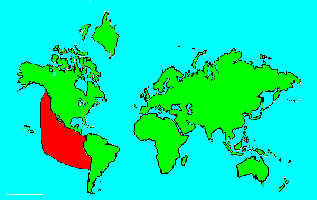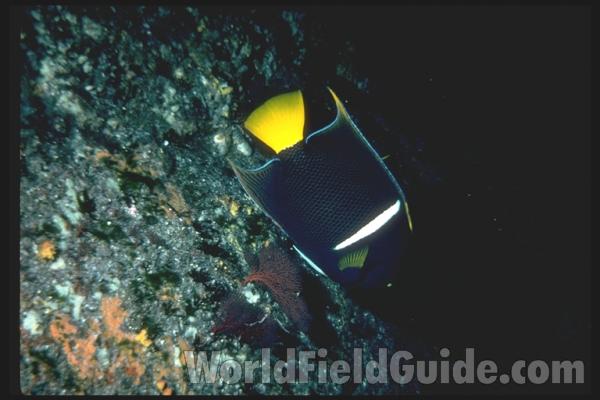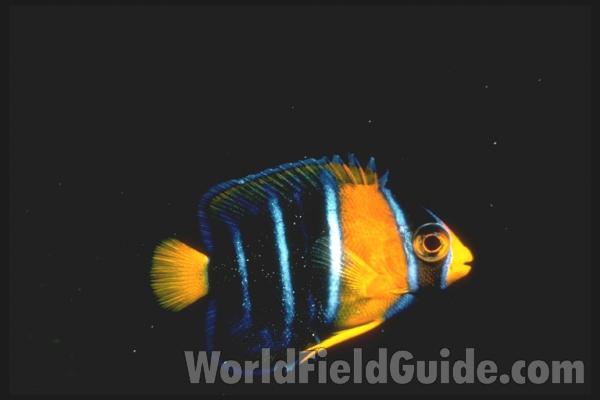SPECIES INFO
Passer Angelfish (Holocanthus passer) is found in the Pacific Ocean and is especially common around Mexico. This species is unusual in that it goes through several different color patterns as it grows to adulthood. The white vertical stripe just ahead of its center helps identify this species.Holacanthus (used by Princeton and Audubon) equal Holocanthus (used in Migdalski) genus are a group of angel fish typically found in shallow water coral reef marine environments. These can become quite large fish. For example, the blue angelfish of the western Atlantic can reach over 17 inches in length. Many of the species are brilliantly colored.
There are two species of angel fish in the Pomacanthidae family with the same species name:
Holacanthus arcuatus - Bandit Angel Fish - Hawaii and adjacent (Pacific Ocean) to 7 inches
Pomacanthus arcuatus - Grey Angelfish - Bermuda to Brazil ( Atlantic Ocean) to 20 inches
The Pomacanthidae includes the genera Centropyge, Genicanthus, Pomacanthus, and Holocanthus. There are about a seven genera and about 80 species in this group. Although these are related to the butterfly fishes, these fish are usually larger and more spectacular. Their popularity with the hobby aquarium industry has led some European countries to ban imports of this entire family. The larger members can reach 14 inches in length, while the smaller members can be up to only 4 inches in length.
Butterfly fish, family Chaetodontidae, are a group of small marine fish that inhabit the reefs of the world. There are many species in the group, many of which are both beautiful and abundant. There are about 115 species distributed among ten genera. The marine angel fish family (Pomacanthidae) is combined herein with its additional perhaps 50 species. The Pomacanthidae includes the genera Pomacanthus and Holocanthus. We have then divided this family into the two typically recognized families.
Perch-like Fish, Order Perciformes, are the largest order of fish in both freshwater and shallow saltwater. Most of the conventional fish belong to this order. The bass, bluegills, perch and crappies of freshwater plus the groupers and sea bass of salt water belong to this order. The fish all have spiny rays in their fins and the tail fin has seventeen rays. There are approximately 150 families. Herein, we have placed the families in alphabetical sequence within this order. (In some instances the typical taxonomic sequence of families is not much help. Consider, for example, that the barracudas are usually placed between the mullets and the threadfins.)
Bony fish, Class Teleostomi, are a class of chordates that include the majority of fish-like animals found on earth. They are characterized by a bony jaw and a bony skeleton. They are found in both fresh and marine waters.
Backboned Animals (Phylum Chordata) are the most advanced group of animals on earth. These animals are characterized by having a spinal cord or backbone. Most members have a clearly defined brain that controls the organism through a spinal cord. Fish, amphibians, reptiles, birds, and mammals are in this phylum.
Currently, some taxonomists believe that the fish should be divided into two groups (sharks and regular fishes) and that there are some other primitive groups in the phylum such as hagfish or lampreys.
Animal Kingdom contains numerous organisms that feed on other animals or plants. Included in the animal kingdom are the lower marine invertebrates such as sponges and corals, the jointed legged animals such as insects and spiders, and the backboned animals such as fish, amphibians, reptiles, birds, and mammals.



